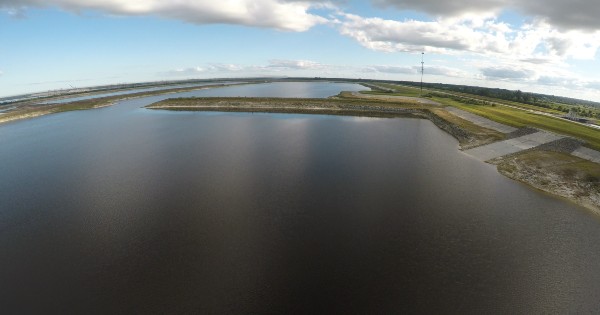
In response to the U.S. Army Corps of Engineers' (USACE) announcement of likely discharges planned for next week to the northern estuaries from Lake Okeechobee, South Florida Water Management District (SFWMD) Chairman Chauncey Goss released the following statement:
“The South Florida Water Management District continues to take aggressive action to prevent harmful estuary discharges from Lake Okeechobee. We have been holding water north of Lake Okeechobee in the Kissimmee Chain of Lakes to curtail rising Lake Okeechobee levels, while at the same time sending as much water south into storage areas and the Central Everglades. We are disappointed but understand why the U.S. Army Corps of Engineers decided to proceed with releases to the estuaries with the full understanding that those releases will be harmful. Be assured, the District remains laser focused on sending as much water south and maximizing storage of water around Lake Okeechobee in an effort to shorten the duration of harmful estuary discharges. I’m thankful we started the wet season with lower levels in Lake Okeechobee and avoided discharges throughout most of the summer. Expediting projects like the EAA Reservoir Project and others around Lake Okeechobee will provide us more options to reduce harmful discharges in the future. It is for this reason they remain a priority of Governor DeSantis and the South Florida Water Management District.”
SFWMD is doing all it can to help manage Lake Okeechobee levels to avoid and shorten the duration of future harmful discharge of lake water to the northern estuaries. Everglades restoration projects like the EAA Reservoir Projects remain a top priority for the South Florida Water Management District to reduce harmful estuary discharges in the future.
Operational Details from SFWMD Water Managers:
- There are currently no reported algal blooms near the discharge structures on Lake Okeechobee.
- The District is doing all it can to help manage Lake levels to avoid and now shorten the duration of harmful discharges:
- Throughout the wet season (since June), SFWMD held extra water in Lake Kissimmee to keep it from reaching Lake Okeechobee from the north. SFWMD will continue to hold water back.
- For the last several weeks, SFWMD took aggressive action to send as much water south as possible. This will continue. This includes sending:
- 300 cubic feet per second (200 million gallons per day) from Lake Okeechobee to storage in the L-8 Flow Equalization Basin (FEB) in Palm Beach County.
- 300 cubic feet per second (200 million gallons per day) from Lake Okeechobee into STA 3/4 in Palm Beach County
- 200 cubic feet per second (130 million gallons per day) from Lake Okeechobee into STA 2 in Palm Beach County
- The District will continue to move as much water south as possible recognizing the Central Everglades is already suffering from high water levels.
- The District can utilize several key storage areas to help reduce harmful estuary discharges including:
- Caulkins Dispersed Water Management in Martin County
- Nicodemus Slough Dispersed Water Management Project in Glades County
- Brighton Valley and West Water Hole Dispersed Water Management Projects in Highlands County
- Lake Hicopochee in Glades County
- BOMA Above Ground Impoundments in Glades Count
- Discharges of up to 600 cubic feet per second (400 million gallons per day) to the Lake Worth Lagoon will begin when discharges begin to the St. Lucie and Caloosahatchee Estuaries.
